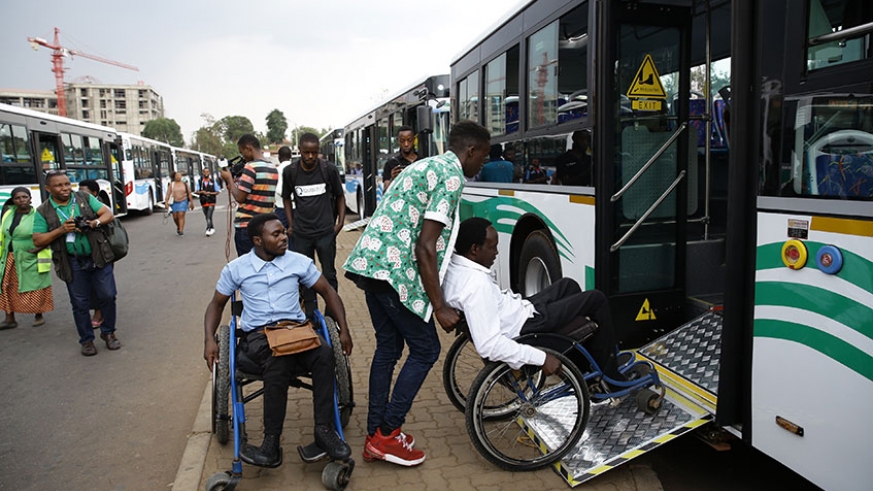

Nearly two years ago public transport operator, Rwanda Federation of Transport Cooperatives (RFTC), introduce buses with provisions for people with disabilities.
The buses feature wheelchair rails and special sits for people with disabilities, and their introduction should, at least, have inspired a sense of urgency among other organisations and the entire society about the needs of the disabled population.
Instead, we continue to drift negligently on the crucial issues affecting disabled people—most importantly when it comes to construction.
Latest reports show that some children with special needs and disabilities are forced to drop out of school due to a combination of strains with social exclusion and inaccessible facilities arguably the most pressing ones.
It has emerged that most school structures lack the basic infrastructure for the disabled.
For the physically disabled, barriers can range from the absence of wheelchair ramps, to storied buildings without lifts, to inaccessible toilets, to other facilities without step-free access.
According to the law governing urban planning and buildings in Rwanda, buildings intended for public use shall be built in a manner that allows access and use by persons with disabilities.
However, this regulation has relatively been respected in some commercial complexes, but compliance has been lukewarm in buildings dedicated for residential use – or apartments – both within Kigali and the country at large.
The situation is worse in schools both in Kigali and in the countryside as well as public and private schools.
All schools too must be compelled to install all these facilities and ensure they are fully functional at all times.
It might be difficult to retrofit old structures. But, at least we can ensure that new buildings are suitable for people with disabilities so that they don’t always have to hope there’s a willing bystander to provide direct assistance.


